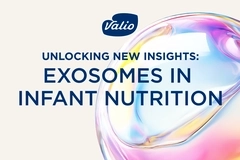US Dietary Guidelines seek public participation with emphasis on weight management
19 Apr 2022 ---The next Dietary Guidelines for Americans for 2025-2030 are underway with a new emphasis on ultra-processed foods and food-based strategies to help prevent or manage overweight and obesity.
This guidance, released every five years, sets the standards for nutrition in the US, with far-reaching implications for governmental food programs, meals served in federal institutions and communities outside of the government.
As a first step, the US Departments of Health and Human Services (HHS) and Agriculture (USDA) are seeking public comment on scientific questions to be addressed in the guidelines. The commenting window is now open and lasts until May 16.
Increasing transparency
Updating the Dietary Guidelines is a multi-year, multi-step process. The HHS and USDA say they are committed to transparency and providing opportunities for public participation.
However, The Dietary Guidelines for Americans have previously come under fire for potential bias due to its close ties to industry and agriculture.
In recent years, the public has increased its participation in the development process. The dietary guidelines published for 2020-2025 was informed by over 62,000 public comments, in contrast to an average of 450 comments received by prior committees.

 The Committee will examine the relationship between sources of added sugar and their impact on the body.About the proposed scientific questions
The Committee will examine the relationship between sources of added sugar and their impact on the body.About the proposed scientific questions
The proposed questions focus on diet and health outcomes across the entire lifespan. Some of the key scientific questions look for the relationship between dietary patterns and the risk of:
- Overweight and obesity.
- Cardiovascular disease.
- Type 2 diabetes.
- Certain types of cancer (breast, colorectal, lung and prostate).
- Cognitive decline, mild cognitive impairment, dementia and Alzheimer’s disease.
- Sarcopenia.
- Bone health.
- All-cause mortality.
- Gestational diabetes.
- Hypertensive pregnancy disorders.
Specific dietary components
In addition to the overarching questions related to dietary patterns across life stages, scientific questions address specific nutritional components.
For example, “What is the relationship between food sources of added sugars consumed and the risk of overweight, obesity or Type 2 diabetes?”
Or: “What is the relationship between food sources of saturated fat consumed and risk of cardiovascular disease?”
 The Committee will examine the relationship between sources of added sugar and their impact on the body.Dairy organizations have previously criticized nutritional guidelines that discourage the consumption of whole-fat dairy. They argue that studies often lump macronutrients into a single category, not taking into account the food source. This topic was explored in The World of Food Ingredients on page 60.
The Committee will examine the relationship between sources of added sugar and their impact on the body.Dairy organizations have previously criticized nutritional guidelines that discourage the consumption of whole-fat dairy. They argue that studies often lump macronutrients into a single category, not taking into account the food source. This topic was explored in The World of Food Ingredients on page 60.
An array of beverages are also being considered, including the impact of dairy milk and milk alternatives, 100% juice, low- or no-calorie sweetened beverages, sugar-sweetened beverages, coffee, tea and water on healthy weight and risk for Type 2 diabetes.
Lastly, the scientific questions focus on strategies for healthy caregiver feeding practices for children and the relationship between the timing of eating occasions, such as snacking or intermittent fasting, and a healthy weight.
The full procedure
A five-step process shapes the complete development of the guidelines.
First, HHS and USDA request public comments on the proposed scientific questions. Next, there is a call for nominations from the public and the appointment of a Dietary Guidelines Advisory Committee.
The Committee then conducts a review of the evidence related to the scientific questions, which culminates in the submission of a scientific report to the Secretaries of HHS and USDA.
The Committee discusses its work in public meetings and provides supporting materials online.
Finally, the HHS and USDA consider the Committee’s report, along with federal agency and public comments, as they develop the next edition of the Dietary Guidelines.
Inclusion and relevance underscored
All prioritized scientific questions will be reviewed with “a health equity lens” to ensure that resulting guidance in the Dietary Guidelines is inclusive of people with diverse racial, ethnic, socioeconomic, and cultural backgrounds.
HHS and USDA proposed these scientific questions based on the following criteria:
- Relevance – Question is within the scope of the Dietary Guidelines and its focus on food-based recommendations, not clinical guidelines for medical treatment.
- Importance – Question addresses an area of substantial public health concern, uncertainty, and/or knowledge gap.
- Potential Impact to Federal Programs – There is a high probability that the question will provide the scientific foundation for guidance that would inform federal food and nutrition policies and programs.
- Avoiding Duplication – Question is not addressed through existing or planned evidence-based federal guidance (other than the Dietary Guidelines).
Alcohol and sustainability another discussion
There are two topics not on the list of questions to be examined by the 2025 Dietary Guidelines Advisory Committee that will be addressed in separate processes.
- Alcoholic beverages remain a high-priority topic, but because it requires significant, specific expertise and has unique considerations, it will be examined in a separate effort led by HHS Agencies that support work on this topic.
Sustainability and the complex relationship between nutrition and climate change is an important, cross-cutting and high-priority topic that also requires specific expertise. HHS and USDA will address this topic separate from the Committee’s process to inform work across the Departments.
Edited by Missy Green
















